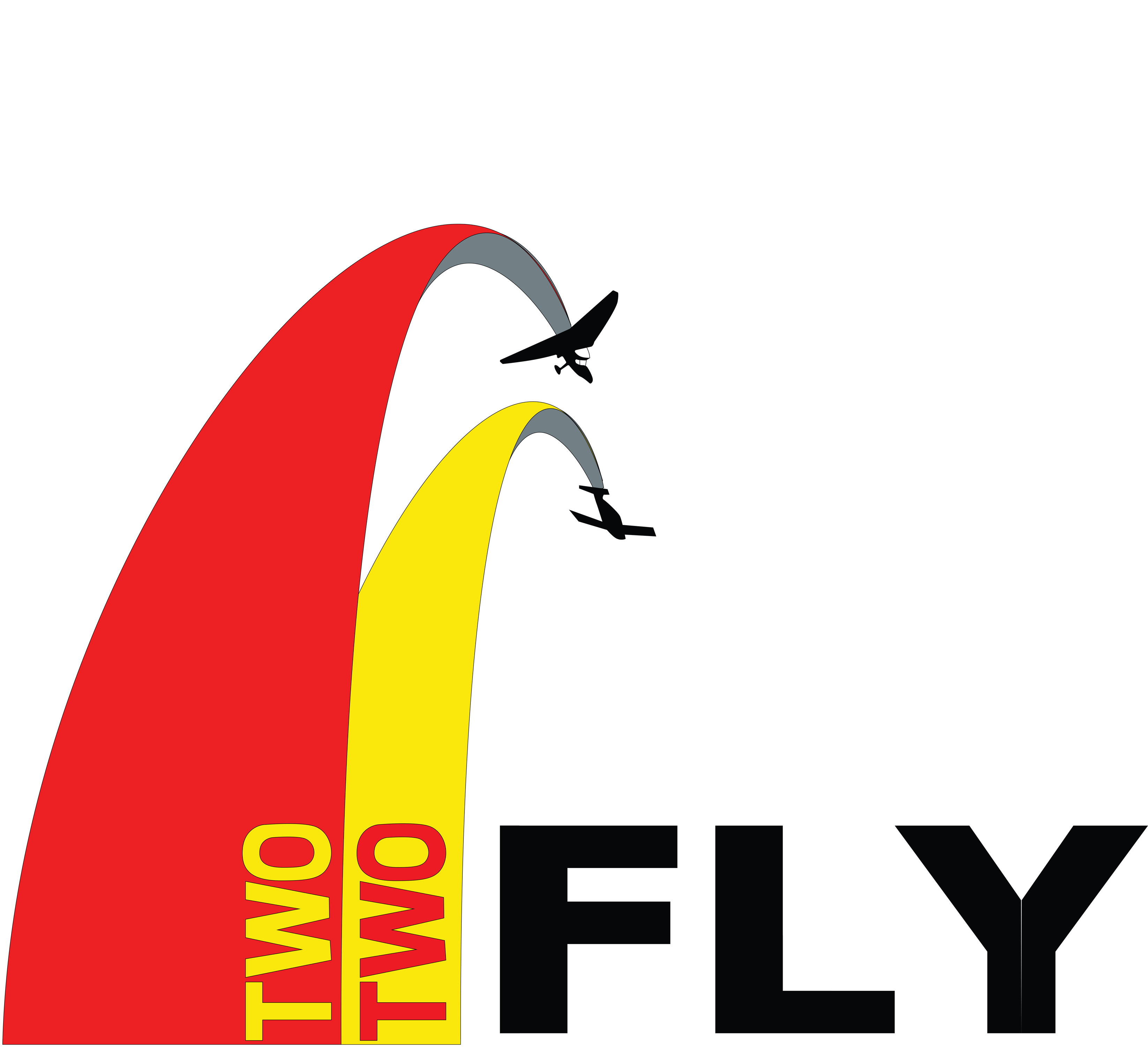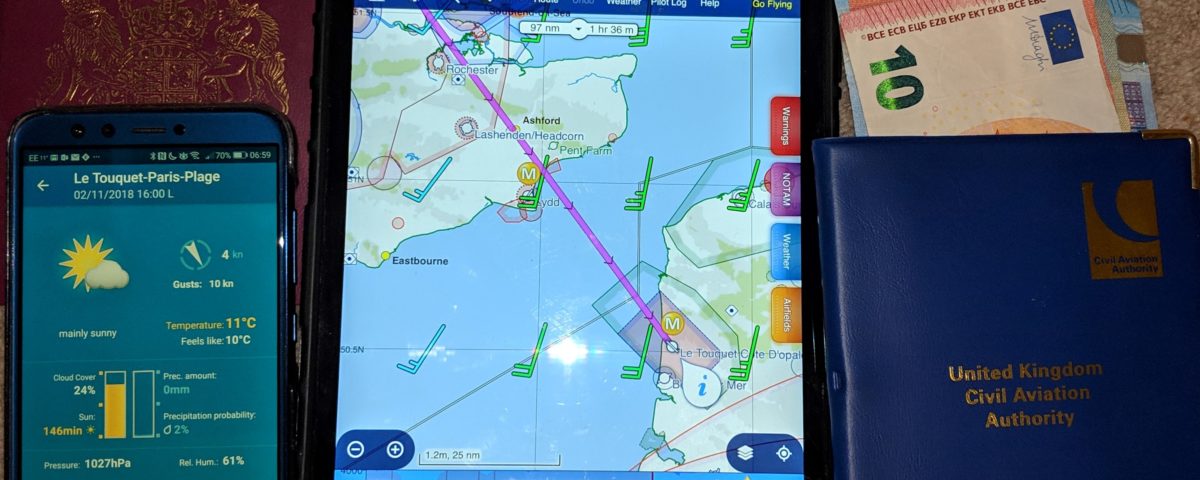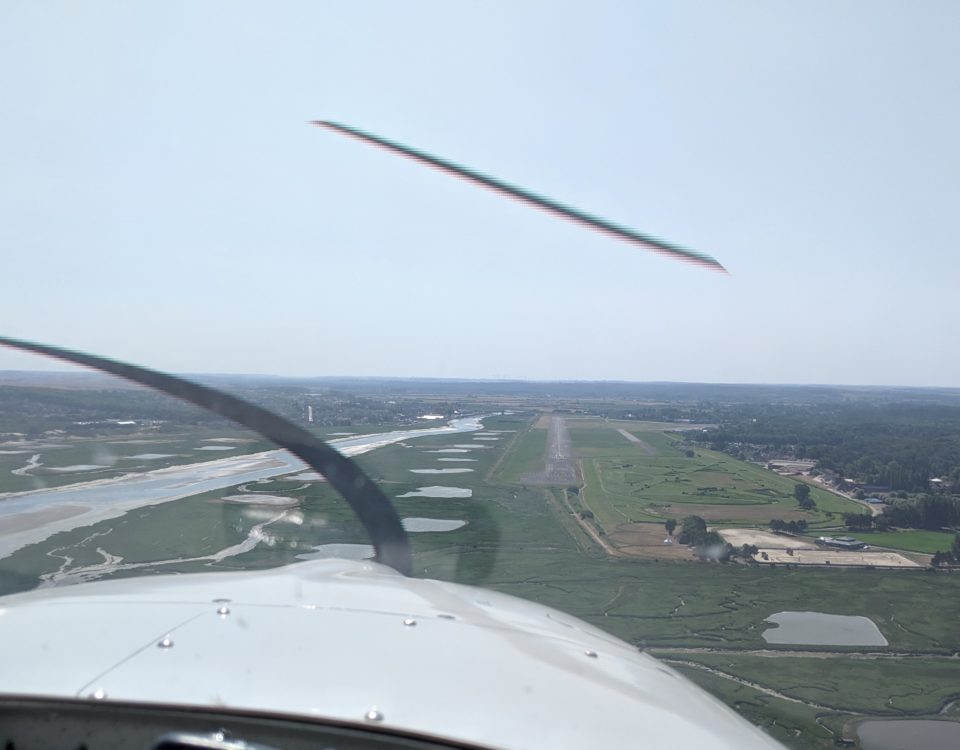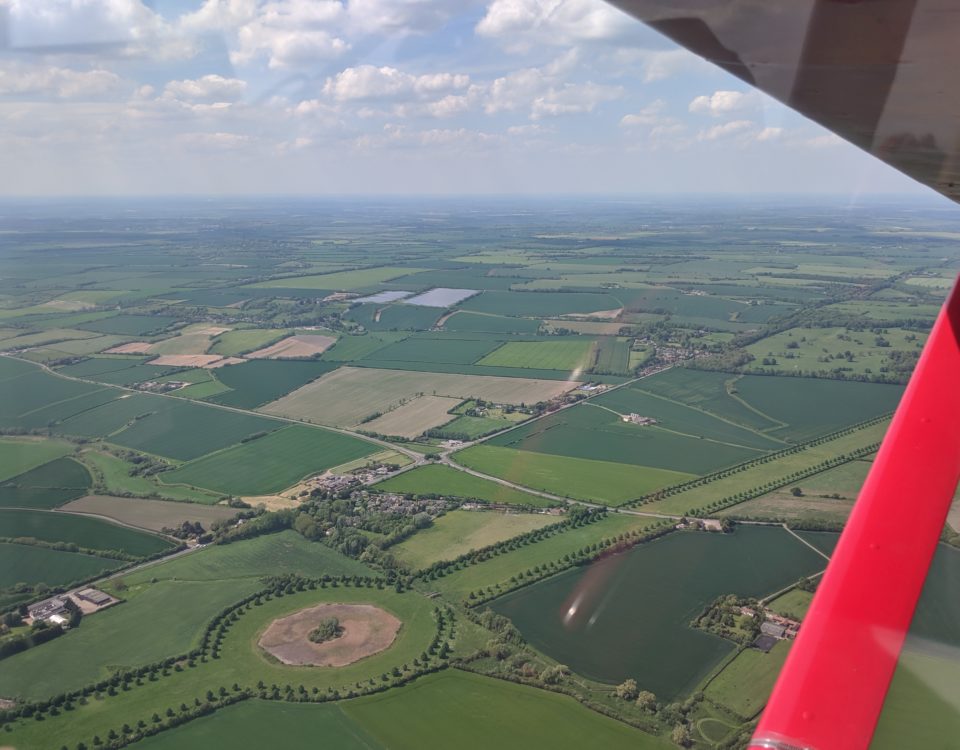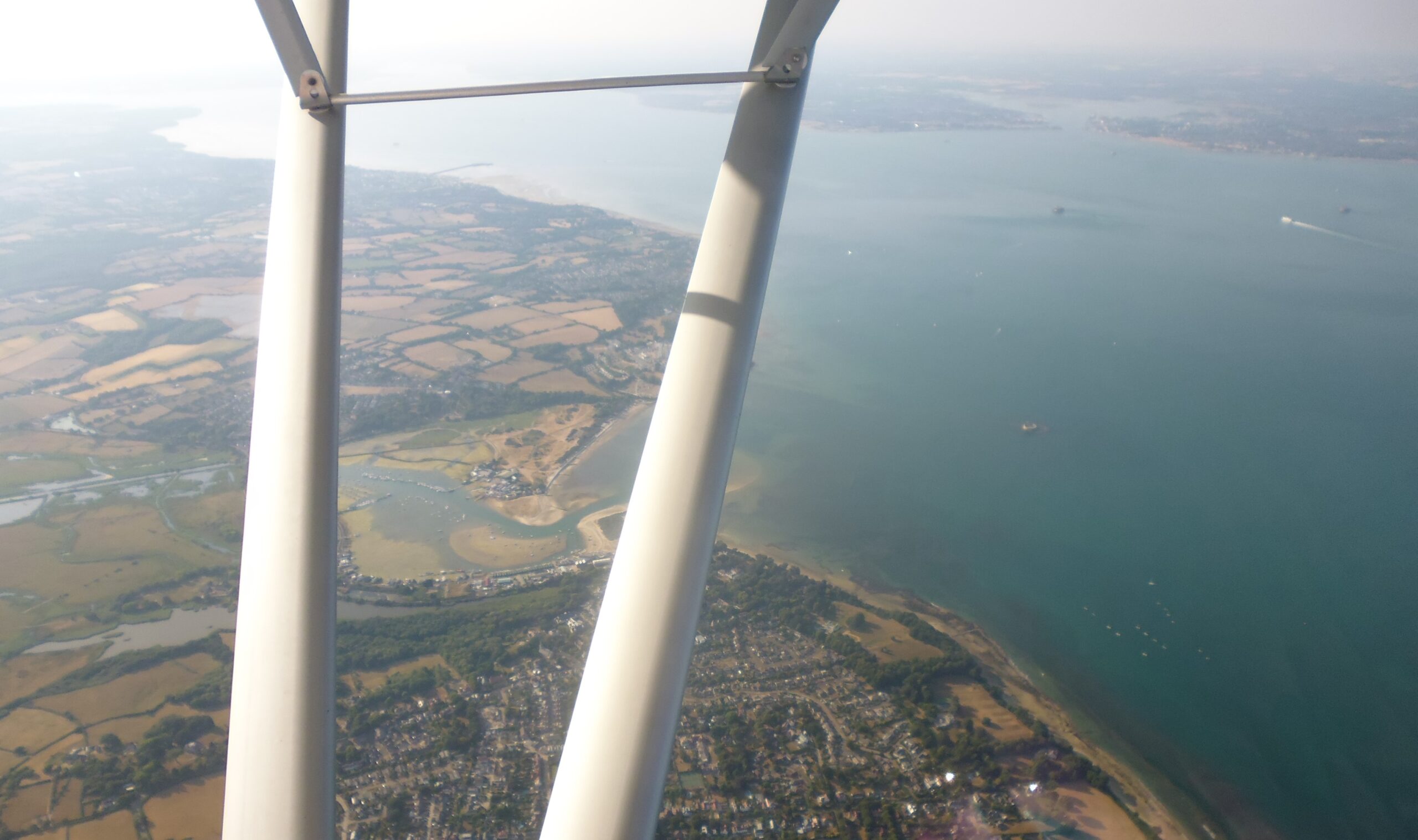
First hop across the water
October 20, 2018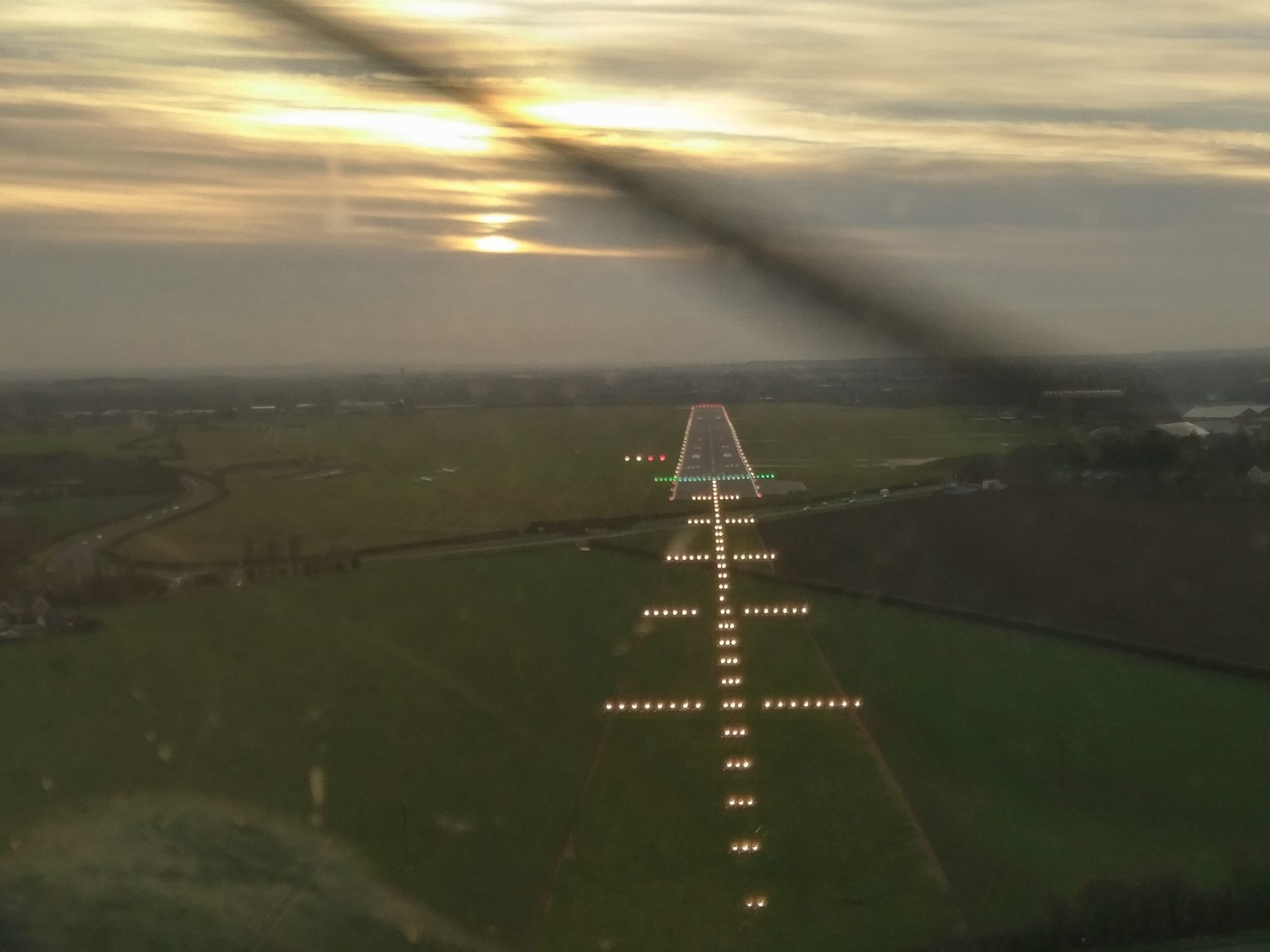
A perspective on runways
November 16, 2018First flight to France – what you need to know
This story doesn’t have a happy ending – yet. It simply serves as a warning for those poor unsuspecting souls who hear breezy tales of how easy it is to hop over to France. ‘Ah, a hop, skip and a jump. Nothing to it! You will be sipping French aqua and eating moules frites in no time at all!’ Don’t believe a word of it.
It’s not nothing, there is a lot of slog, and unless you are going with someone who has been before and can guide you, it is surprisingly difficult to find out how on the internet.
I was over the moon to be offered the chance to flit across to France. After all, it could single-handedly qualify as the sole reason I learnt to fly. Little did I know the day would come when I was thankful that my former instructor John called the whole thing off. I took off the life jacket with a sense of relief I would never have imagined possible.
I had done my homework, or so I thought. I had scoured the BMAA, LAA and CAA websites looking for information on what you need to have in the way of documentation to fly your own plane over to France and come up with very little. I had watched an interesting YouTube video of a flight across the Channel in a small plane, looking intently at the Le Touquet runway and the landing, listening attentively to all the calls the pilot made. I had clicked right through the Le Touquet airport website for info. I had studied the airport plates available on Skydemon which offer much more regarding visual beacons and calling points, the layout of the airfield and how to do a circuit there than their website. Every radio station that could need to be contacted was listed, and the calls audibly rehearsed. I hadn’t gone as far as my flying buddy Dan and written them all down, but for next time I will.
The morning dawned after a surprisingly good night’s sleep, and I made us a packed lunch because we were going to get there by the time the reportedly brilliant restaurant had closed, and I can’t cope without food. We got to the airfield and it all went to pieces. The flick-of-a-switch forms take a lot more effort than reported. The Skydemon is registered in my partner’s name, and even though the plane is in both our names, we simply could not get a flight plan and GAR form filed with me as pilot. By the time the GAR form for the UK Customs, which has to be filled in four hours before departure, had rejected John’s details four times and we were trying to do it on his account, and realised we hadn’t filled in the bit about an alternative airport, tension levels were running so high, I had no desire to travel to France that day.
So for those of you who would like to cross an international border in your microlight, but are also grappling in the dark, here’s my take on what you may need.
For yourself:
Your passport
Your pilot’s licence, but not your logbook
Lifejacket and PLB (personal locator beacon – check it is still within date)
For the plane you need to have available:
Interception papers (can be downloaded from CAA website – http://publicapps.caa.co.uk/docs/33/20130121SSL11.pdf – they tell you what will happen if you are intercepted by a military aircraft en route)
Certificate of registration
Certificate of insurance
Permit to fly and certificate of validity
Flight plan:
Start with downloading the maps of France on your Skydemon or your GPS package.
You need to file a flight plan, which you should be able to do on Skydemon, but it then also needs to be activated by an airfield. If you are flying out of a small strip (list it as ZZZZ under departure airfield), the closest ATC airport may enquire whether you want it activated, but otherwise you need to request they do so. London Info can also activate it.
You plot your route and send it off at least 30 minutes before you leave, preferably an hour. My suggestion is the night before. If you take more than half an hour to arrive at your destination, and are not in radio contact with anyone, they will send the cavalry to find you, so make sure you stick to it!
Details you need are – make and callsign of aircraft, pilot name, phone number, routing – where you are coasting out from, alternate airfield (for Le Touquet try Calais or Abbeville), survival equipment (life jacket and PLB) and VFR flight.
A regular across the Channel suggests the old-fashioned way, as well, printing out and filling one in by hand so you have a back-up if the GPS goes down.
The timings will be in Zulu, or UTC, and you file one from France for your return. Le Touquet has free wi-fi at the airport, but make sure you get the difference between UK, French and Zulu time.
GAR form:
For this you will need not only the callsign, aircraft type and departure airfield, but the full passport details of pilot and passenger. This includes passport number, issuing state, expiry date, date and place of birth, home address and email. If you are travelling with an instructor, as I was, note that this is more info than you get from a copy of their passport details.
The aircraft type is ZZZZ Microlight, category Landplane, and the base ZZZ with your airfield name.
I could not submit the form from our Skydemon, so logged onto https://www.onlinegar.com/login.olg to submit a form with myself as pilot. It costs the same – £3 per flight.
Radio:
If you are leaving from the south of England, as I did, you should be in contact with London Info (124.600) as you coast out, and they can be extremely busy. Friends flying just behind us were number five n the queue.
You can also contact Lydd Approach on 120.705 and they will take you across to mid-channel, where you change to Lille and they may pass you straight on to Le Touquet, who can deal with anything under 3000ft. The French were wonderful – they had all our details and didn’t want anything more. Oui monsieur!
Please note that this is not intended as an exhaustive list, and you may well find that some of this doesn’t apply to your own flight. I would have loved to have this information available when I was going over though! Airfields like Stoke Medway also do courses on International Travel.
If there is anything more that you discovered on your travels, please feel free to add a comment below.
Bonne chance!
